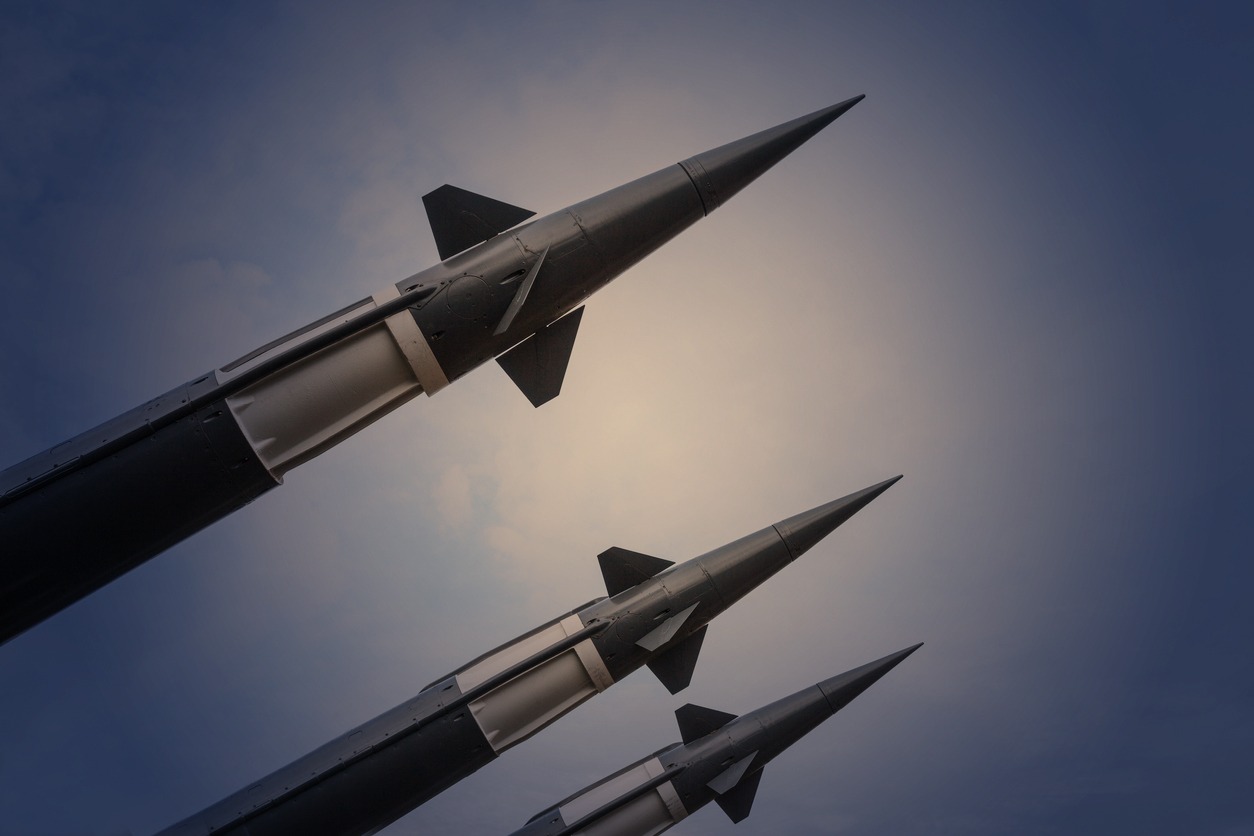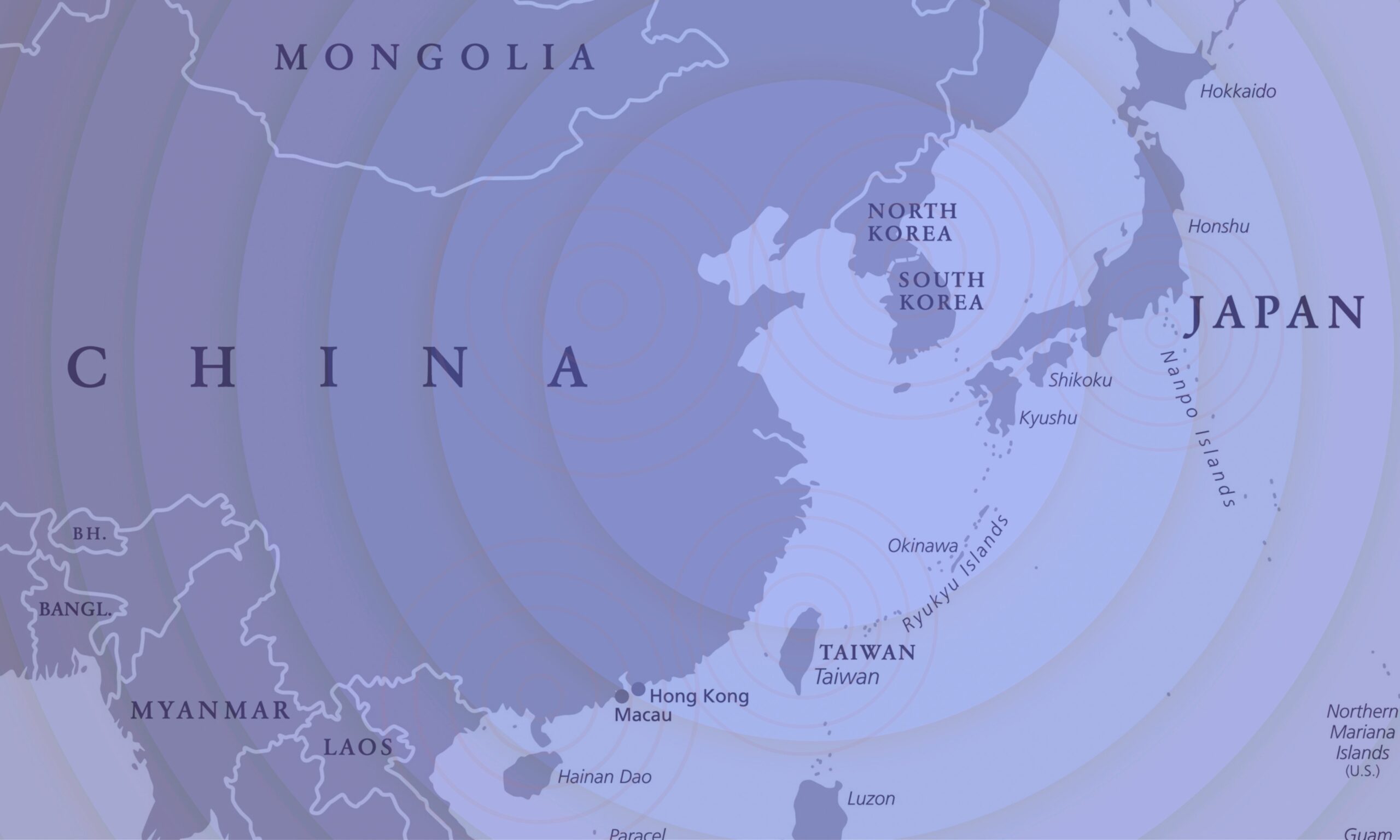APLN Joint Project on Nuclear Weapon Use Risk Reduction
Reducing the Risk of Nuclear Weapon Use in Northeast Asia (NU-NEA)
In May 2021, APLN began a collaborative three-year research effort with the Nautilus Institute, the Research Center for Nuclear Weapon Abolition, Nagasaki University (RECNA), and the Panel on Peace and Security of North East Asia (PSNA) on a project entitled, “Reducing the Risk of Nuclear Weapon Use in Northeast Asia (NU-NEA).
The project works to define a credible set of use cases for nuclear weapons in a limited nuclear war on or involving the Korean Peninsula and Northeast Asia more broadly. The aim is to assist policymakers to identify ways to avoid a nuclear conflict and de-escalate tensions on the Korean Peninsula and in North East Asia by developing credible nuclear use cases and proposing policy solutions.
From 8-12 October, 2021, we held three workshops to examine the use cases that have been developed in year 1. At the workshop, discussions were informed by expert special reports commissioned to provide background for the development of the use cases. Topics include examining military and nuclear force and counterforce strategies on the Korean Peninsula; modelling of nuclear use cases; potential use of low-yield nuclear weapons; the role of missile defense in North-East Asia; the history and current status of Northeast Asia’s nuclear security from differing national perspectives, among other issues.
The workshops also reviewed the preliminary report on nuclear weapon use cases in Northeast Asia, which provided the foundation for exploring the impacts of nuclear weapons use and the policy implications from the analysis of the use cases. Ideas were exchanged among APLN members, PSNA members, and other scholars and experts, including the authors of the special reports.
In Year 2, we simulated and analyzed five scenarios, estimating potential fatalities and health effects, and published 5 special reports and a Year 2 report. In the current Year 3, we have commissioned five expert papers to expand on policy proposals. We held two workshops in October 2023 and will publish a final report alongside the expert papers in a special edition of the Journal for Peace and Disarmament in 2024.
Project Objectives
- Identify under what conditions might nuclear weapon be used (with or without intention) in Northeast Asia (NEA), and by whom? How might escalation occur? Which states might mount to nuclear response to first nuclear use?
- What are the possible consequences (fatalities, physical damages to key infrastructure, environmental damages, climate impacts…) of nuclear weapon use in Northeast Asia?
- What measures/policies can reduce the possibility of use of nuclear weapons in NEA? What lessons do analyses of use cases offer for development and deployment of policies that will help to avoid nuclear weapons use?
Northeast Asia Nuclear Weapons Setting
- China is estimated to possess ~350 nuclear weapons, mostly strategic weapons, with short to long range missiles (including ICBMs) that can be fired from mobile and fixed launchers, submarines, ships, bombers
- Russia has several thousand nuclear weapons that can be launched from a full range of delivery systems, and including non-strategic (tactical) as well as strategic weapons
- DPRK is estimated to have fissile material for ~50 warheads (but number of warheads unknown), has been developing and testing missile systems
- Japan has a “policy principle” against possession of nuclear weapons, but has large stocks of Pu from its civilian reactors, and technologies that would potentially allow rapid weapons and delivery system development/deployment
- ROK and Taiwan do not have nuclear weapons, but have cooled spent fuel from civilian reactors, technological prowess
- The United States has thousands of nuclear warheads, all types of delivery systems, major military bases, naval deployments in NEA
Impacts of Nuclear Weapons Use in Northeast Asia (NU-NEA) Project: Three Year Research Effort
Year 1: Define a plausible set of use cases for nuclear weapons in a nuclear conflict war on or involving the Korean Peninsula and in Northeast Asia more broadly
Year 2: Calculate the direct and indirect effects, including dispersion of radioactivity, impacts on infrastructure, populations, and environment (and potential effects on climate, if possible) of resulting nuclear detonations in Korea and beyond
Year 3: Draw policy implications based on the results of year 1 and 2 analyses of the pathways to and impacts of limited nuclear wars in the NEA region; and to disseminate the results and policy recommendations widely to policymakers and stakeholders
Papers published in support of the project’s analysis include:
27 Jan 2022 | Year 1 Final Report
The Year 1 Final Report presents and asses cases for nuclear weapons use in a limited nuclear war on, or involving, the Korean Peninsula and Northeast Asia.
28 Feb 2022 | Van JACKSON
Van Jackson explores how different schools of thought on US nuclear strategy would respond to different scenarios in Northeast Asia.
Potential Use of Low-Yield Nuclear Weapons in a Korean Context
23 Feb 2022 | Eva LISOWSKI
Eva Lisowski explores the potential uses of low-yield nuclear weapons in the context of a possible conflict on the Korean Peninsula.
Avoiding Nuclear War in the Taiwan Strait
16 Feb 2022 | Sheryn LEE
Sheryn Lee, senior lecturer at the Swedish Defence University, assesses the prospect of conflict and nuclear use in the Taiwan Strait.
Prospects for DPRK’s Nuclear Use Scenarios and Deterrence Measures of the US and ROK Alliance
13 Feb 2022 | LEE Sangkyu
Lee Sangkyu investigates possible nuclear use cases pre-empted by the DPRK based on its nuclear capabilities and nuclear strategy.
Counterforce Dilemmas and the Risk of Nuclear War in East Asia
9 Feb 2022 | Ian BOWERS
Ian Bowers assesses the potential for nuclear war in East Asia by contextualizing the geostrategic factors of US-China military relationship.
Korean Peninsula Nuclear Issue: Challenges and Prospects
3 Feb 2022 | Anastasia BARANNIKOVA
Anastasia Barannikova questions the viability of existing approaches to DPRK and the feasibility of denuclearization of the Korean Peninsula.
20 Jan 2022 | Matt KORDA
Matt Korda assesses the nuclear weapons and delivery systems that the DPRK could use in the event of an imminent US invasion or regime change operation.
The Role of Missile Defense in Northeast Asia
12 Jan 2022 | David WRIGHT
David Wright identifies key uncertainties that the US and its allies must consider when assessing the effectiveness of defense systems against potential DPRK attacks.
6 Jan 2022 | Daryl G. PRESS
Daryl Press, Professor at Darthmouth College, analyses hypothetical scenarios that could lead to the United States deciding to use nuclear weapons on the Korean Peninsula.
US Entry into the Korean War: Origins, Impact, and Lessons
16 Dec 2021 | James I. MATRAY
James I. Matray describes the reasons for the outbreak of the Korean War and US entry into the conflict, and lessons learnt.
Nuclear-Use Cases for Contemplating Crisis and Conflict on the Korean Peninsula
9 Dec 2021 | Paul K. DAVIS and Bruce W. BENNETT
The authors set out ten cases highlighting the range of ways in which nuclear weapons might be used on the Korean Peninsula.
31 Mar 2023 | APLN
New report simulates the impacts of nuclear weapons use in Northeast Asia and the devastating cost to human life.
Implications of the Ukraine War for ROK Security
5 Dec 2022 | CHEON Myeongguk
Cheon Myeongguk explores the possible implications of the Ukraine conflict on the ROK attitudes regarding nuclear weapons.
Birds of a Feather: Thoughts on Pyongyang’s Lessons from the War in Ukraine
9 Nov 2022 | Alexandre MANSOUROV
Alexandre Y. Mansourov discusses the lessons learned from the Ukraine conflict by DPRK leadership.
Potential Implications of the War in Ukraine for Northeast Asia
9 Nov 2022 | Paul K. DAVIS
Paul Davis argues that the Ukraine war has made the range of nuclear-use cases in Northeast Asia even more plausible.
Potential Implications of the Situation in Ukraine for Russia’s Nuclear Deployment in Northeast Asia
9 Nov 2022 | Anastasia BARANNIKOVA
Anastasia Barannikova warns that impacts of the situation in Ukraine on Russia’s nuclear policies in this region cannot be ruled out.
Russia’s Nuclear Signaling in Ukraine and China’s Nuclear Policy
13 Oct 2022 | Tong ZHAO
Tong Zhao argues that China may look at the war in Ukraine and internalize lessons that add further ambiguity and uncertainty.
Year Three Report: What Should Be Done? Practical Policies to Prevent Nuclear Catastrophe
29 Mar 2024 | Van JACKSON
Van Jackson determines that Northeast Asia is a site of “nuclear precarity” and offers practical policy recommendations for avoiding nuclear escalation.
Introduction: Reducing the Risk of Nuclear Weapons Use in Northeast Asia
Nuclear-Conventional Entanglement in Northeast Asia: The Case for Crisis Management Interoperability
5 Jul 2024 | Benjamin ZALA
Benjamin Zala surveys the growing nuclear-conventional entanglement risks in Northeast Asia as well as how entanglement is driving a new era of nuclear arms racing in response.
The Political Reckoning in a Post-Nuclear Use Landscape
28 Jun 2024 | Rabia AKHTAR
Rabia Akhtar provides a comprehensive analysis of the multifaceted challenges posed by nuclear weapons in Northeast Asia and offers valuable insights for crafting a more secure global environment.
No First Use Can Still Help to Reduce US-China Nuclear Risks
21 Jun 2024 | Adam MOUNT
Adam Mount argues that although no first use declaratory statements are unlikely to significantly affect US-China nuclear crises, they can still play an important role in reducing risks between the two countries.
6 Jun 2024 | Lauren SUKIN and Woohyeok SEO
Lauren Sukin and Woohyeok Seo explore public concerns about nuclear deterrence and proliferation in Australia, Indonesia, Japan, ROK, and Taiwan, arguing that expanded consultations could potentially help soothe nuclear anxiety in East Asia.
Revisiting the Comprehensive Security Roadmap to Reduce the Risk of War on the Korean Peninsula
19 Apr 2024 | Peter HAYES, Chung-in MOON, John DELURY, Morton HALPERIN, Thomas PICKERING and Leon V. SIGAL
Six experts revisit the concept of comprehensive security in Northeast Asia as the guiding principle that should be used to reduce tension, avoid war, and re-engage on a constructive peace-making cooperative security agenda in Northeast Asia.
Behavioral Arms Control and East Asia
16 Apr 2024 | Heather WILLIAMS and Ulrich KÜHN
Ulrich Kühn and Heather Williams suggest using a “Behavioral Arms Control” framework between China and the United States to reduce the risk of war.
Nuclear Strategy of the DPRK: Doctrine Evolution and Future Prospects
14 Mar 2024 | Anastasia BARANNIKOVA
Anastasia Barannikova analyses the DPRK’s hybrid nuclear weapons strategy and argues that its impressive progress was the result of clear strategic planning and a vision of the role of nuclear weapons in the DPRK’s defense strategy.
Nuclear Threats Under International Law Part I: The Legal Framework
Nuclear Threats Under International Law Part II: Applying the Law
8 Mar 2024 | Anna HOOD and Monique CORMIER
Anna Hood and Monique Cormier explore the international legal implications of threatening to use nuclear weapons.




